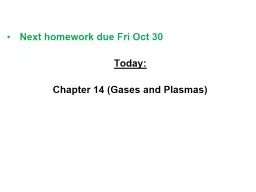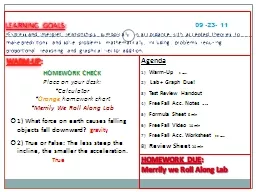PPT-Next homework due
Author : marina-yarberry | Published Date : 2016-06-18
Fri Oct 30 Today Chapter 14 Gases and Plasmas Gases and plasmas Preliminaries Will now apply concepts of fluid pressure buoyancy flotation of Ch13 to the atmosphere
Presentation Embed Code
Download Presentation
Download Presentation The PPT/PDF document "Next homework due" is the property of its rightful owner. Permission is granted to download and print the materials on this website for personal, non-commercial use only, and to display it on your personal computer provided you do not modify the materials and that you retain all copyright notices contained in the materials. By downloading content from our website, you accept the terms of this agreement.
Next homework due: Transcript
Download Rules Of Document
"Next homework due"The content belongs to its owner. You may download and print it for personal use, without modification, and keep all copyright notices. By downloading, you agree to these terms.
Related Documents














